VYACHESLAV KOROLENKOV'S STORY ABOUT PAINTING
AND 10-MINUTE TEMPERA SKETCHES, DEMONSTRATIONS AND TIPS.




THE SIZE OF TEMPERA SKETCH.


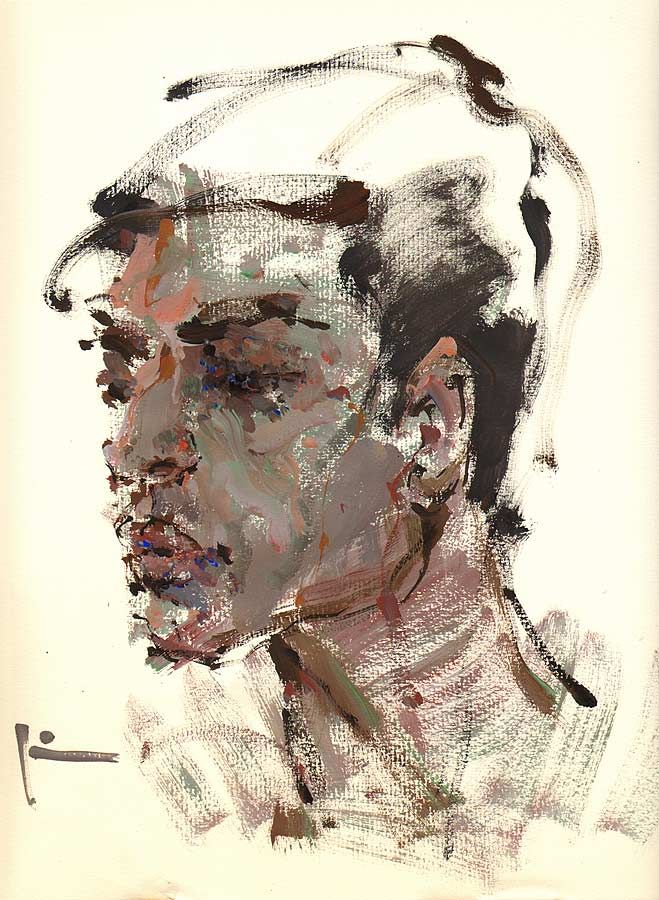
PAINTING. PLAIN-AIR OR STUDIO?
Many times I’ve observed something really incredible. The subject of the painting is seemingly simple, why not just to copy and repaint it as it is? The artist though plunge into it, becomes the part of it, reflects their inner feeling, some magic occurs at the point of the brush, a miracle. The artist creates something unique, the reflection of their own perception, the only thing no one else has. Someone just copies it. The others create the mysterious depth they have no idea where it appears from.
Actually, there is no difference between plain-air and studio painting sessions. You can paint in the studio using a photo. Though, it is easier on the plain-air, in the nature. You become the part of this area, you don’t need to make any extra efforts to reproduce inside you the state that a camera can’t reflect. Painting process is not limited by the plain-air, painting process is a miracle, something that is subtle, the plain-air just helps to plunge into this miracle.
IT’S IMPORTANT TO STOP ON TIME.
No matter what you do, there has to be moderate approach, in any case, you need to catch yourself and stop, when you gain a good result. The easiest way to learn this is to take pictures of steps of your work, at the time, when you feel that it is almost ready, but you still have a desire to finish it. Over time, you’ll learn to catch this moment when working and stop.
I’m against blind copying, meticulous and to every detail, but I have a great respect for any painting, I just find inspiration in other things. I recognize as kindred spirits those artists, who are able to generalize, are able to show something, are able to leave something behind.



The same fascinates me when I communicate with people. For instance, in communication, I prefer less words, but each word has its value, weight and beauty. I think, the love to life and desire to explore it are behind this. I’m convinced, that when this desire to learn and develop fades away it’s a signal to the universe that life is over. It’s pointless. There is nothing to be interested in, no motivation to develop. I have an infinite respect for the people who at the age of 80-90 took the brush for the first time, and who follow their desire to paint, develop, and learn how to do this all. With the help of the painting to learn how to show your vision to the world, your emotions and share them. To learn about composition and colour. How the mixing colour are exciting in one case, but has no such effect in another.
The craving for a new day makes me paint new works. This leads to the state of happiness, when you paint or create a new composition. It is very interesting. All the painting, to my mind, is a mix of semi-tones, the skill to use semi-tones, even a quarter of these tones. They are always different. There is a lovely phrase by an impressionist, that he doesn’t paint the world the way it really is, and not the way he sees it, but the way he wants to see it.



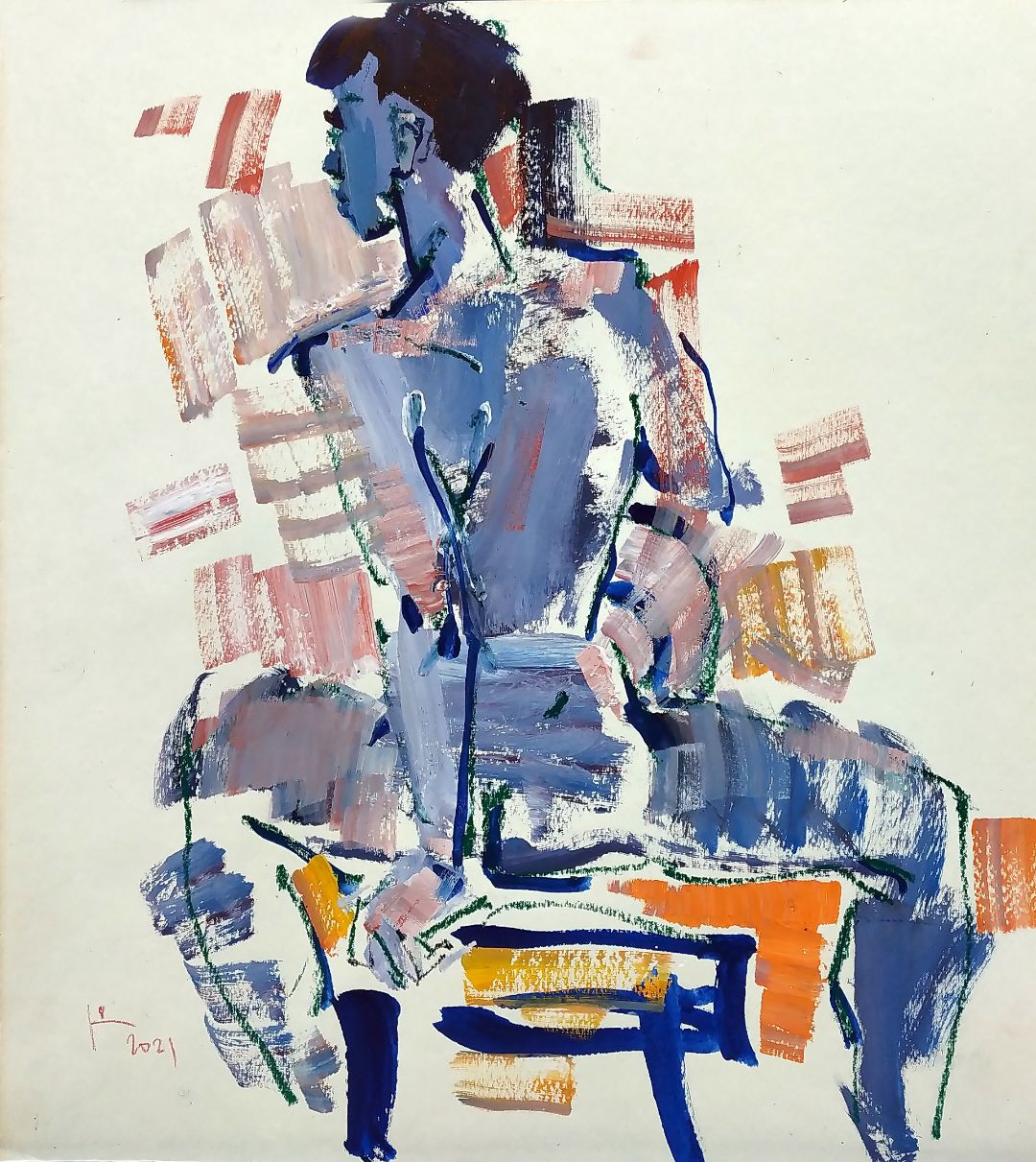
A DRAWING OR A PAINTING?



CAN A SMALL SKETCH BE TRANSFERRED TO A BIG FORMAT?
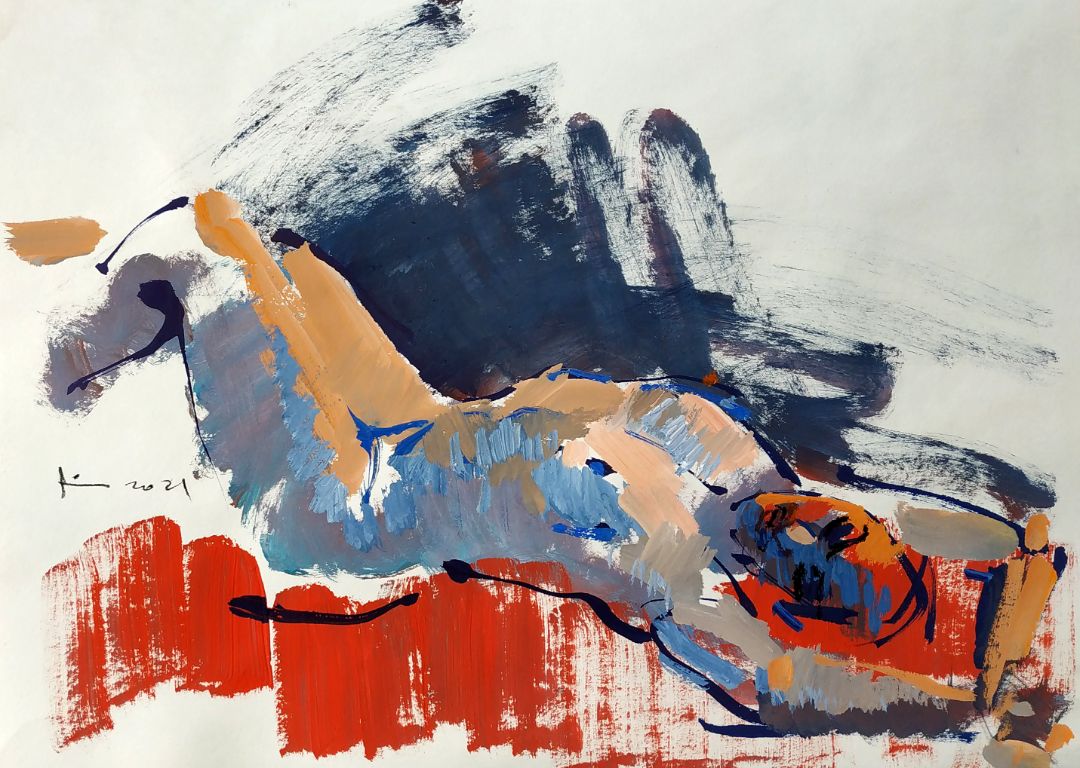






The faster an inherently talented person learns how to draw, becomes familiar with paints and techniques, the earlier such person will fulfill their creative abilities as a painter and will be able to realize any idea and get satisfaction from process and result. When you are a perfect master of techniques like construction of any form, sculpting of space, it is much easier to remain true to yourself. You don’t need to waste time and strength on drawing, you can go straight to finding colour and space design. You can concentrate on discovering something new, share it with others, that is what matters.
When you are a perfect master of techniques like construction of any form, sculpting of space, it is much easier to remain true to yourself. You don’t need to waste time and strength on drawing, you can go straight to finding colour and space design. You can concentrate on discovering something new, share it with others, that is what matters.



DESIGNER SKETCH IN TEMPERA
This is a new form, a new solution of what I see. I find it interesting to leave the fragments of blank white paper, make them the part of the composition, to make the game of spots, including white spots. It is important for me, to make a viewer feel this game and become a part of this game. It is transmitting of a feeling, transmitting of impression of what one sees. It can be a set of brushstrokes, or just any sports, in which you can guess a form or mood. Guessing is a key word, the key to the idea that every time you can look at the painting differently. Every time to refer to it as to something what can uncover over and over again.






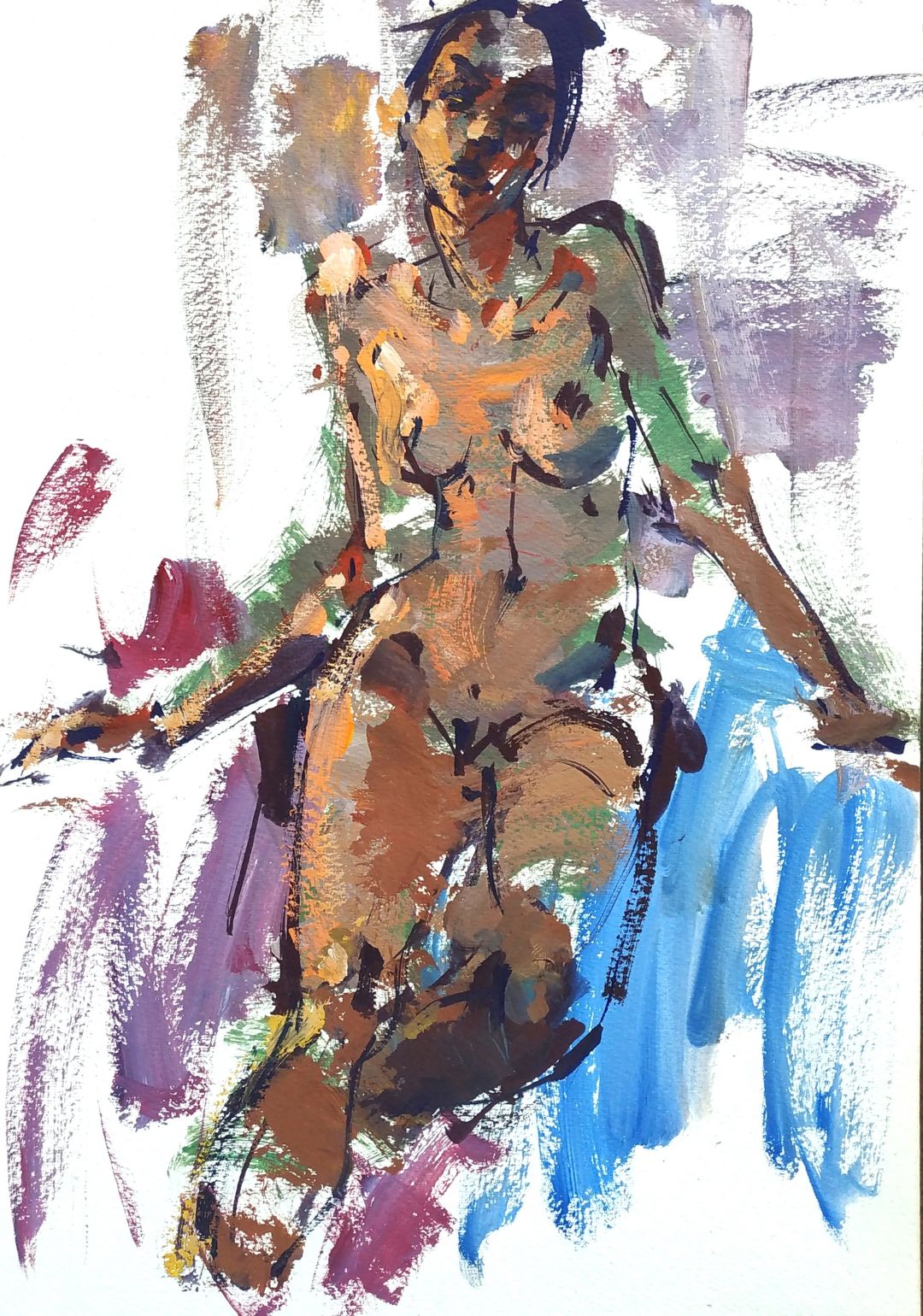

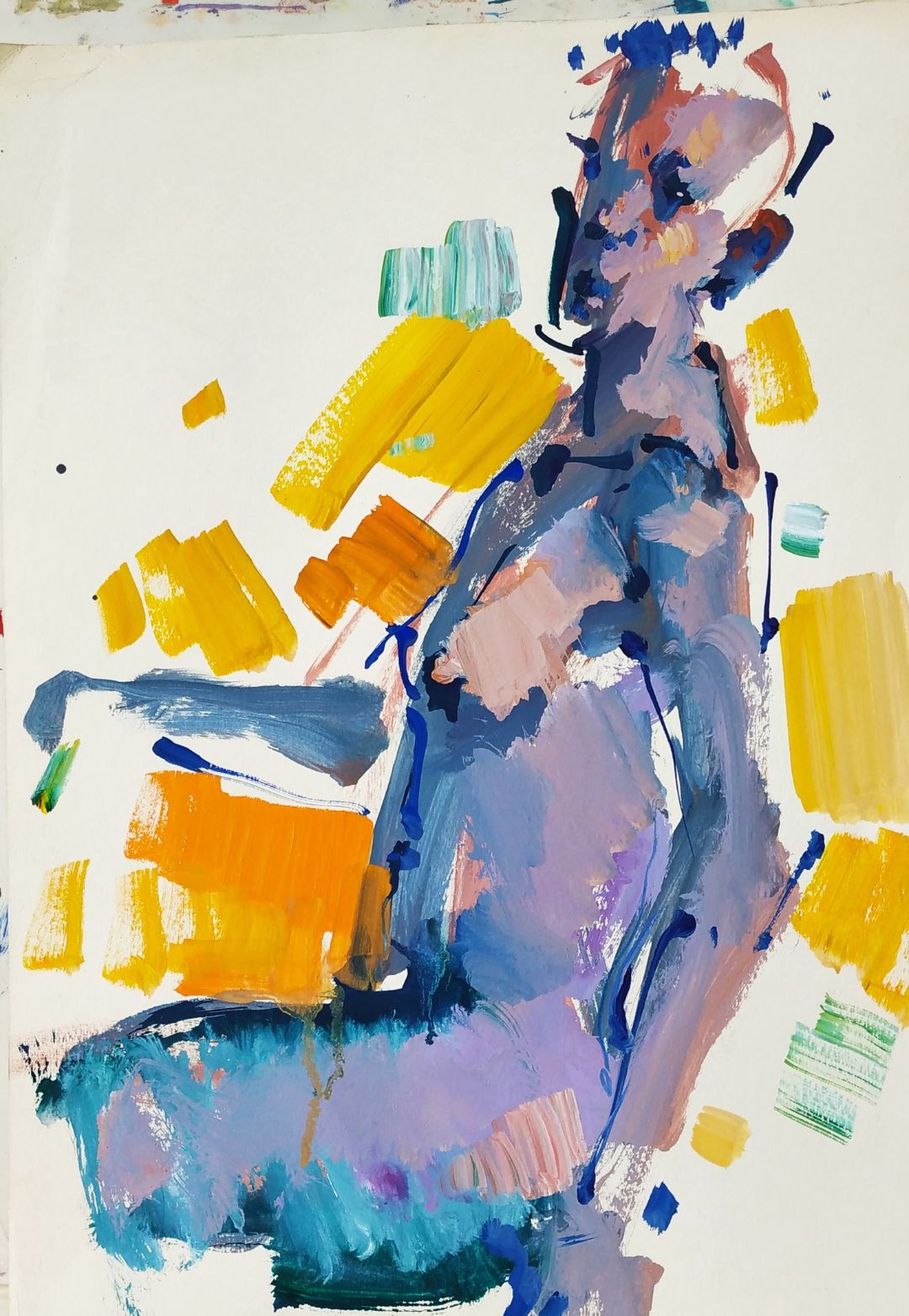





Adding a bright colour to the sketch, just having noticed a similar spot in my studio, I always intuitively check how the colour goes together with what I’ve already done. I listen to my gut feeling, how I want to make it: darker and more contrast or lighter and milder, increase the colour intensity or reduce. The development of the sketch can go any way. Much depends on the time remaining. I always set the timer, notice the time left and approximately count the things, I can make within the time left.
My advice is not to try to make everything. It’s better not to hurry, to work on less details, leaving the hints, but show the main plastics and the proportions of the body, the work of the form and the volume in the space, this is the main. It’s important to constantly refine the way the model is placed in the space, check, whether it is really the same positioning as in my sketch or I failed to fix the dynamics of the pose, I failed to depict the proportions precisely. It is also important to work on the beauty of the line, if you use the line as a tool for gaining expressivity. Try to make harder line more visible in some places, the weaker line in the others. Somewhere the line must disappear at all, and the light will work there.
I saw the red cushion near the model and make some bright strokes, this is the solution for the background. When the main colour spots are made, you can take a thin brush and work out outlines with the line. The line can cross the colour spots, that’s the beauty of painting. The line of the shoulder blades, a chest, a thigh is highlighted more. A calligraphic brush let you with different pressure make the line of a different width. Somewhere the blank sheet is left. I like it when a part of blank sheet is left and this works as a part of the composition.
In my opinion, we just need to underline the light. The work can be finished any time. In technique, that I’ve offered you, the main idea is not to overdo, the light must be very laconic, if you overdo, you can spoil the simplicity of such solution. I add the warm colour, which contrasts with cold semi-tones, and that’s fascinating by itself. Such technique can be used in landscape, still life and in any genres, it can be used by those, who study drawing. The drawing is the base of the pictorial art, you have to master this skill, I strongly recommend to study it properly.



TO CREATE A COLOUR.

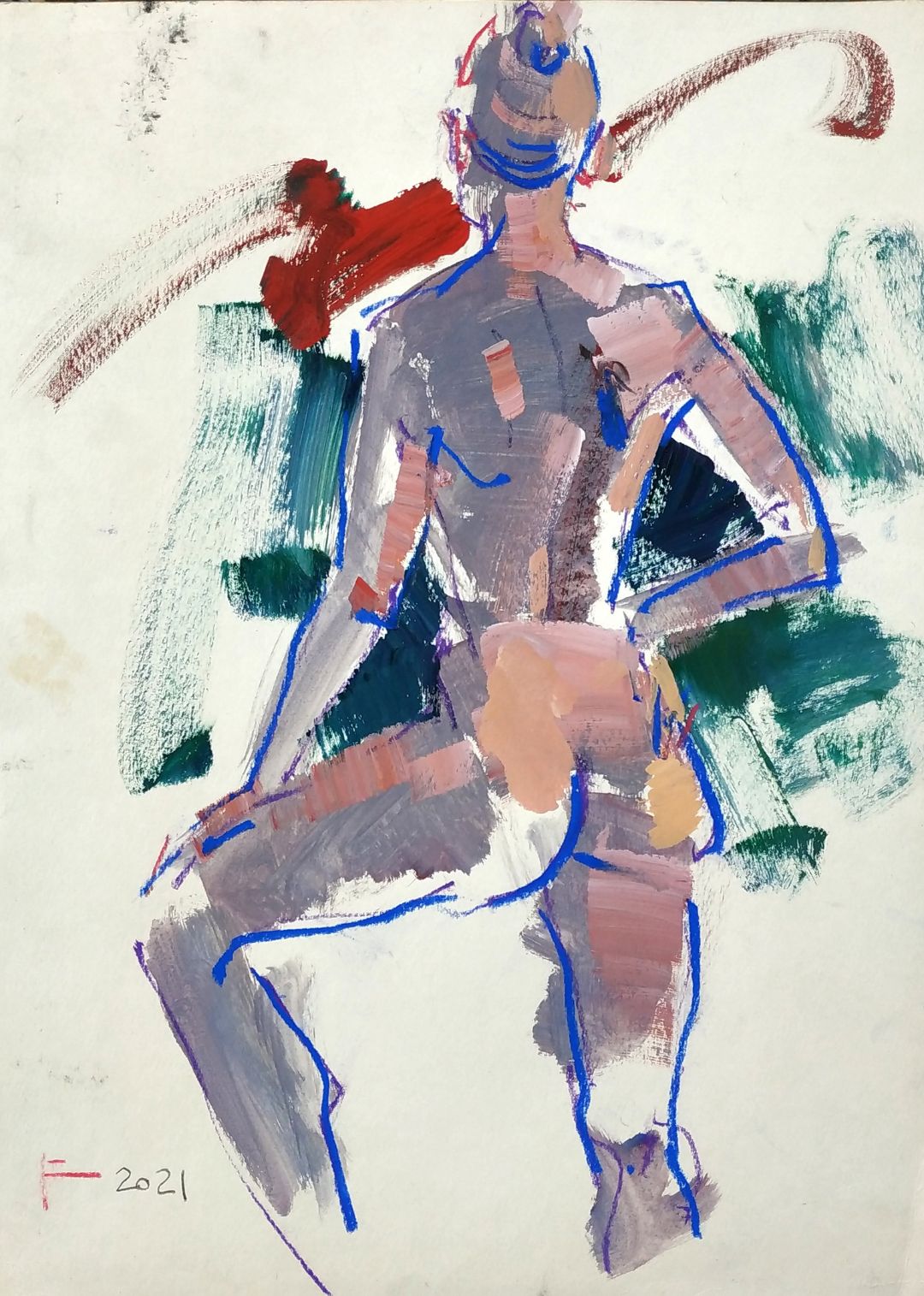
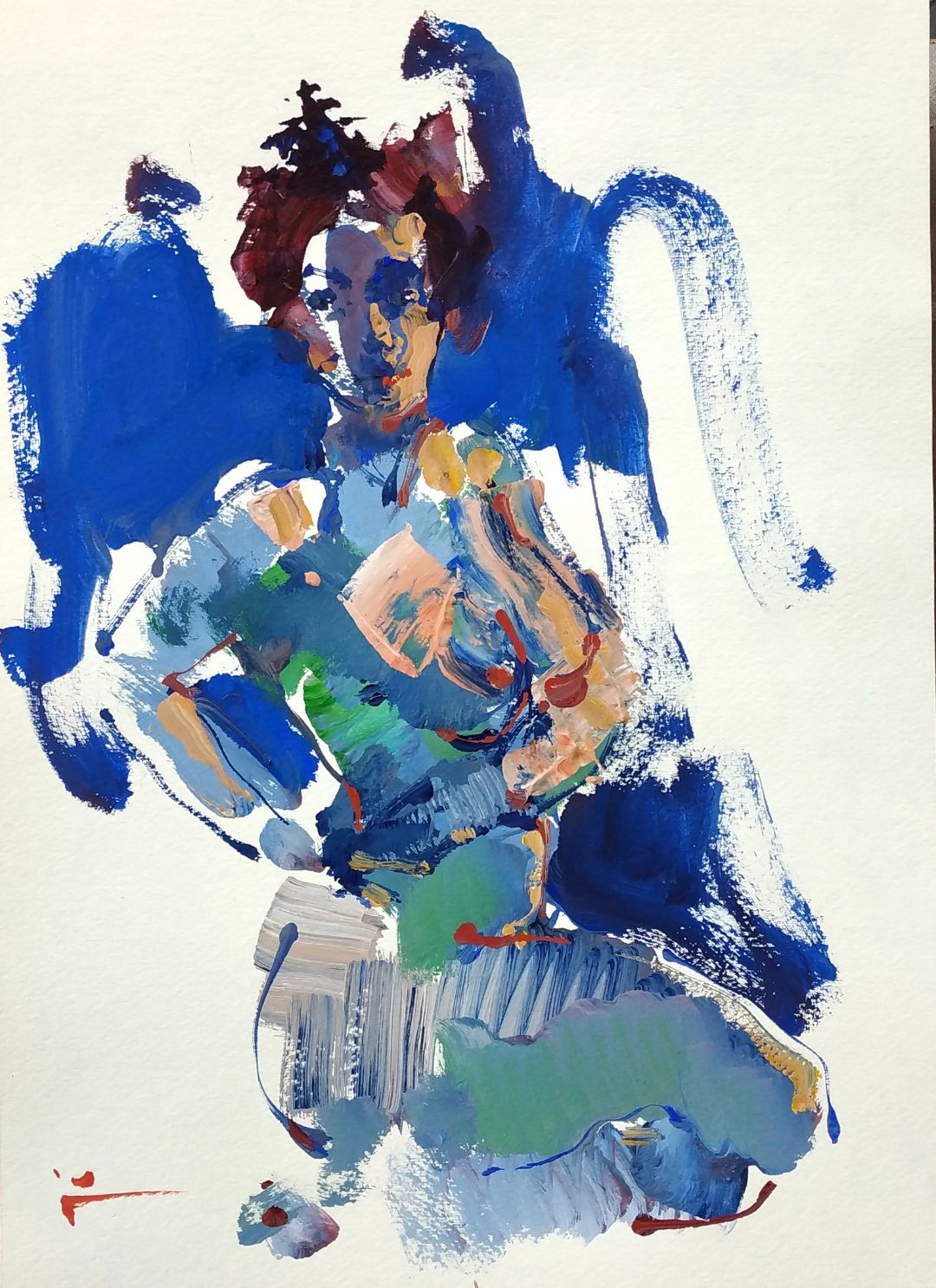




The red textile in my sketch is the composition on the red what I see. Actually, it is of a very sober colour. However, I find it interesting to experiment on such colourful mixes, especially when the red and greenish tones go together very well.
I use the warm ochre colour for the lit parts of the body. Somewhere I add yellow, somewhere white or red. You can use different tones, the are all close together.
it is important to show that the light on the chest, face and hand is different. I don’t think it’s necessary to count all the light spots, I only underline the main, the ones that form the composition. I create my own colour solution.
If there is no possibility to draw a nude model, try to work with still lives or landscapes. Make sketches, look for compositional decisions, find yourself in colour, get a taste of depicting something simple. Get different expressions on simple forms, this is very important for your growth.

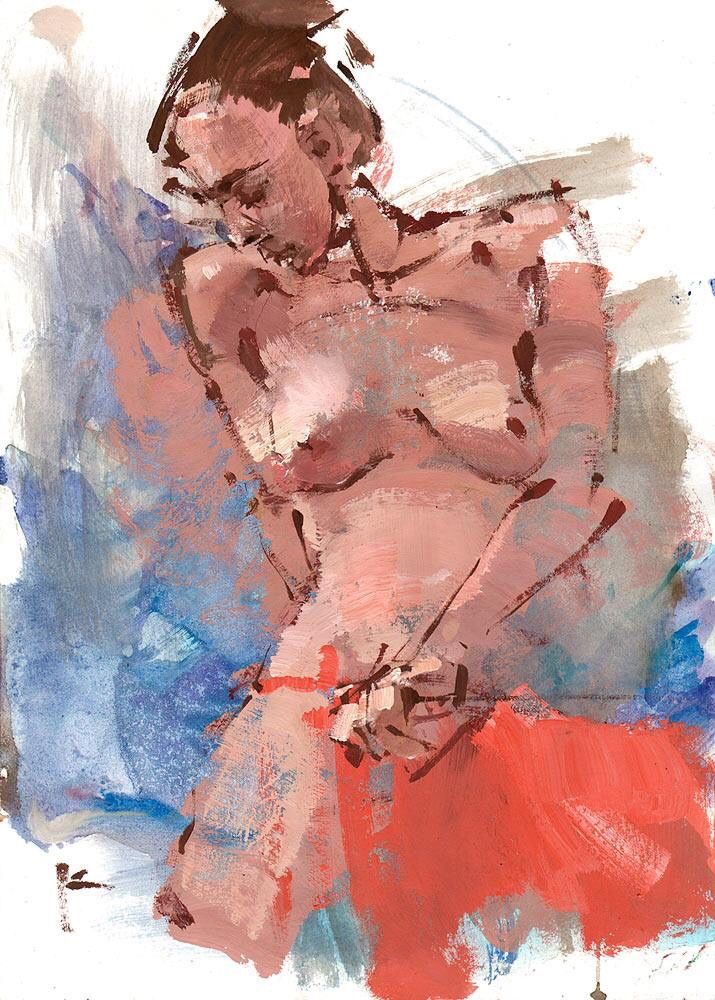


It turns out that even such a quick sketch turns into a work of art. At some point, I feel like I need to stop. Of course, you can continue to refine and finish, but sometimes the magic finishes when you go on refining. You lose dynamic, freshness and expressiveness. The power and beauty are in simplicity. I’m for simplicity. I encourage you to sketch as often as possible. Sketches are the quintessence of what you can do.
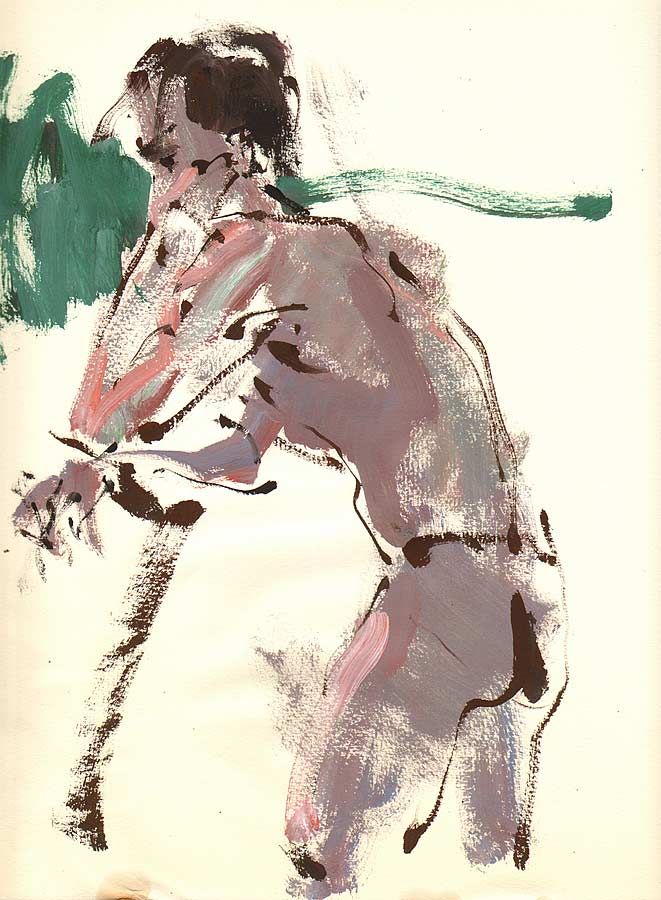

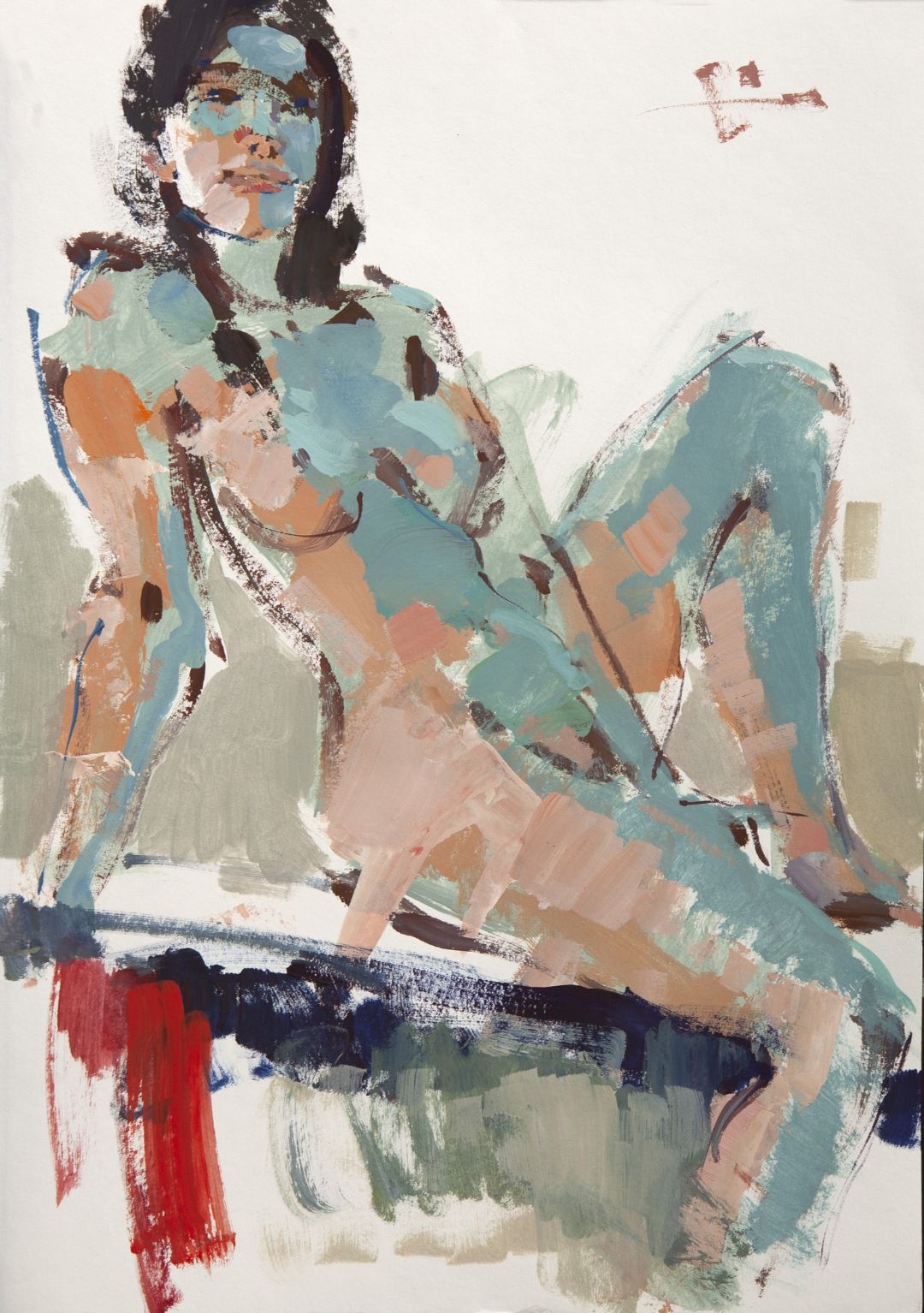
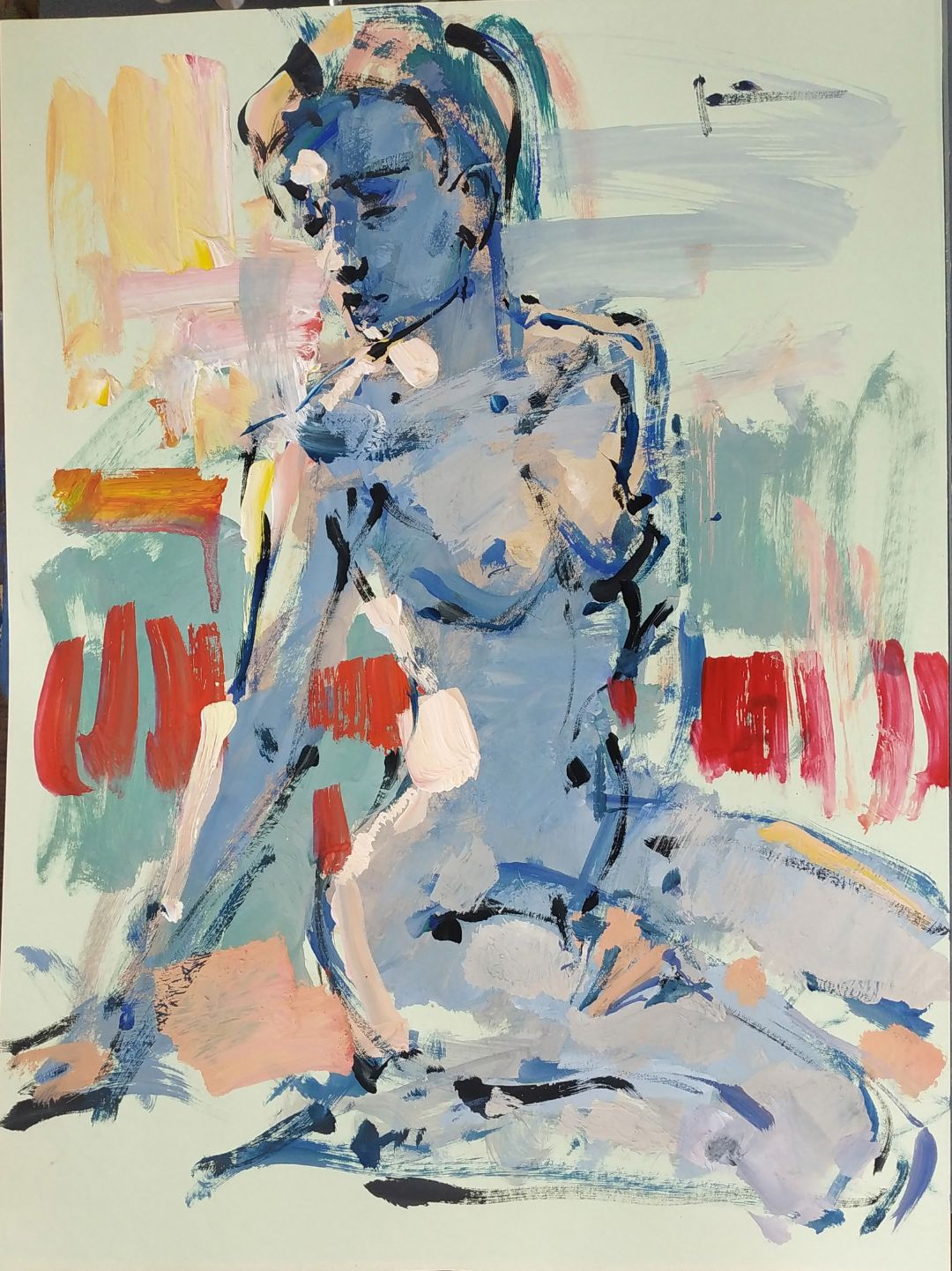






Your own works, your technique you always know the best of all and again you need to paint in a new way, it’s really hard not to repeat yourself. I can think of Claude Monet with his series The Rouen Cathedral. Almost the same composition, but dozens of different colour solutions, colour approaches. In my opinion, this is one of the best examples of continuous and persistent artist’s search, his movements towards a design solution. He didn’t paint literally, he didn’t copy the colours he saw, he solved them. He was looking for interactions, unexpected interactions, creative ones.
Isn’t this the beauty of painting to find each time a new creative solution to the same motive?